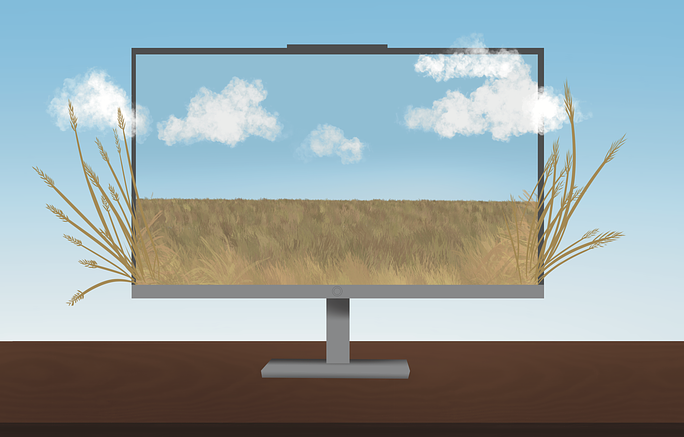Machine learning is helping Manitoba farmers combat one of the most serious threats to wheat production.
Christopher Henry, an associate professor in the department of computer science at the U of M, is leading projects that apply artificial intelligence (AI) to agriculture. His team is developing automated tools to detect and measure fusarium head blight, a fungal disease that damages crops across the prairies.
“We are working on developing automated methods to quantify the degree of fusarium head blight in the field,” Henry said. “So that it can help with breeding programs to breed fusarium head blight-resistant cultivars and […] produce seeds […] that are resistant to this particular disease.”
One key part of the research project is a six feet square “data rover.” The remote-controlled cart moves through fields, collecting images and sensor data that can be used to train machine learning models. Two prototypes are already being tested, Henry added.
Beyond field robotics, his lab also works on the theory of machine learning. One focus is the use of generative methods — the same type of models behind large language models such as ChatGPT and Gemini. The task is to create labelled image datasets. Such datasets are scarce in agriculture, where photos of invasive weeds or crop diseases are not as readily available as everyday images found online.
“One of the things that we’re looking at is how [we can] use some of these generative methods that are really good at creating photorealistic images […] for scientific applications such as what you find in agriculture,” Henry noted. Using these datasets, the goal is to “train another machine learning algorithm” to solve important problems or build useful digital tools in the agriculture industry.
Henry’s interest in digital agriculture began in 2015, when he worked with a local robotics firm on autonomous farming equipment. The project revealed that, while algorithms existed, the necessary labelled data did not. That gap led him to develop new approaches to data creation and machine learning for agriculture.
Today, Henry collaborates with industry partners including MacDon and Manitoba Hydro on projects that range from machine learning and generative methods to hydrology engineering. He sees his work contributing on two fronts — advancing the theory of machine learning and applying those methods to solve real-world problems.
“These generative methods for creating labelled datasets are really exciting because there’s lots of scientific domains, not just agriculture, that need labelled datasets for highly specialized scientific problems,” Henry emphasized. “But creating the dataset is the costly and time-intensive part of that whole process, so I’m excited to develop these methods to help alleviate that bottleneck.”
For students interested in this field, Henry emphasized the importance of collaboration across disciplines. In digital agriculture, computer scientists are now working with people in plant science, soil science and biology, he explained.
Henry said, “It takes people that have knowledge in different specific areas to come together to get a real-world solution that helps people.”
Ultimately, his goal is “to create or […] help drive the sustainable intensification of prairie crop productions.” That means automating tasks with AI to reduce reliance on fertilizer, pesticides and fuel, while still maintaining — or even increasing — crop production.


